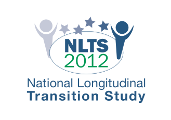About NLTS
NLTS 2012 will inform policy, practice, and future research by examining the high school and post-high school outcomes of youth and how these outcomes are related to their high school experiences and to the services and supports they receive. In particular, the study will describe the secondary and postsecondary trajectories of youth with an Individualized Education Program (IEP), in comparison with the trajectories of youth with a Section 504 plan and youth with no identified disability. The current effort, Phase II of the study, will combine data from multiple sources to create a comprehensive picture of students’ progress through high school and into college, training, and employment. These sources include school records and transcripts from participating districts, college enrollment information from the National Student Clearinghouse, college financial aid information from the Department of Education’s Federal Student Aid (FSA) data files, employment and earnings data maintained by the Social Security Administration (SSA), and information about vocational rehabilitative services and supports from the Rehabilitative Services Administration (RSA).
Why NLTS 2012 is Important
More than 2.7 million youth with disabilities between the ages of 13 and 21 receive special education services funded under Part B of the Individuals with Disabilities Education Act (IDEA). A major challenge in developing policies and improving practices to assist transition-age youth is securing reliable and complete information on their diverse needs, school experiences, and postsecondary paths. NLTS 2012 is the only source of information that can provide a national picture of the experiences or youth with and without disabilities in the same school districts. The data collected under Phase II of the study are essential to shaping policy for youth with disabilities and are part of a congressionally mandated assessment of the Individuals with Disabilities Education Act (IDEA). While NLTS 2012 is entirely voluntary, the participation of every district is critical to ensure the completeness and accuracy of results.
